
Let’s figure out … how can we reverse global warming? – Paul Hawken
People everywhere making decisions for meeting human physical needs (in turquoise) are creating exponentially growing things-we-extract flows and pollution flows (in orange) that are damaging the biosphere (in deep green) faster than the biosphere can regenerate itself …
This exponentially-growing damage to the biosphere as a whole is showing up as the nine global-scale ecological crises (including the climate crisis) identified by the Stockholm Resilience Centre …
In his books Drawdown (2017) and Regeneration (2021), environmentalist Paul Hawken took on the challenge of reversing the climate crisis “in one generation.”
Drawdown made three massive contributions to the project of reversing the climate crisis in one generation:
First, Drawdown established the concept of a “climate solution” for meeting human physical needs[1] that people everywhere might decide to adopt.
Second, Drawdown established the concept of a climate solution that people everywhere want to adopt because …
the climate solution delivers performance benefits because it meets a human physical need (for things like energy, water, food, materials & manufactures),
the climate solution delivers cost savings benefits because it avoids more costs than it incurs, and
the climate solution delivers climate-crisis-reversing benefits measured by the avoided and/or sequestered greenhouse gas (GHG) emissions delivered by the climate solution …
Third, Drawdown validated the concepts of cost savings benefits and climate-crisis-reversing benefits by measuring and evaluating the cost savings benefits and climate-crisis-reversing benefits delivered by 93 categories of climate solutions.
Drawdown estimated those 93 categories of climate solutions – when widely adopted -- to deliver more than $97 trillion of avoided cost savings (cost savings benefits) and more than 1 trillion tons of avoided and/or sequestered greenhouse gas emissions (climate-crisis-reversing benefits) …
So what happened to Drawdown?
Despite its groundbreaking thinking about “climate solutions,” cost savings benefits and climate-crisis-reversing benefits and …
… despite its stupendous potential in the form of: (1) avoided cost savings on a scale of $100 trillion[2], and (2) climate-crisis-reversing benefits on a scale of 1 trillion tons (1000 gigatons) of avoided GHG emissions …
… Drawdown’s promise of a “plan … to reverse global warming” – and Regeneration’s promise of “ending the climate crisis in one generation” – have not yet been fulfilled.
Drawdown’s promise has not yet been fulfilled because, until now, a process has not yet been invented through which people everywhere want, decide & act to adopt climate solutions like those studied in Drawdown.
To put Drawdown into global operation for “ending the climate crisis in one generation” – and to create a “regenerative economy” on a scale of $100 trillion of avoided cost savings – I invented a process – called “regenerative decision-making” – through which people everywhere use “regenerative information services” for …
… identifying options for meeting their human physical needs …
… evaluating the performance benefits, cost savings benefits and biosphere-regenerating benefits of those options …
… comparing those benefits …
… persuading themselves what options they want to adopt …
… and deciding to adopt “regenerative options” (including climate solutions) that deliver performance benefits, cost savings benefits and biosphere-regenerating benefits …
People everywhere wanting, deciding & acting to adopt regenerative options (in turquoise) scales back (in yellow) the things-we-extract flows and pollution flows (in orange) …
… and, at the same time, keeps intact the things-we-extract flows (in orange) and things-we-use flows (in chartreuse) for meeting every human being’s physical needs …
… which allows the biosphere (in deep green) to regenerate itself (in yellow) as a whole …
… and allows the biosphere’s regenerative capacity (in bright green) to reverse (in yellow) the ecological crises (in orange) as a whole …
… and allows the biosphere’s regenerative capacity (in bright green) to meet the physical needs of all its living beings — including its human beings — as a whole …
Some people might feel excited to be in on the creation of a regenerative economy -- on a scale of $100 trillion -- for reversing the ecological crises (including the climate crisis) as a whole.
In the words of Kurt Vonnegut: “If this isn’t nice, I don’t know what is.”
How about you? What’s your feeling about that?
What do you think? Does this make sense to you?
If the prospect of practically & actually reversing the climate crisis excites you, please consider subscribing to my Substack channel, Solving the Eco-crises:
I’m super grateful for your likes, comments and re-stacks.
Thank you for reading Solving the Eco-crises.
Peace and Aloha!
Erik
P.S. I cross-posted this article on Medium for greater reach.
[1] “The way to reverse global warming is to address human needs, the needs they have now.” – Paul Hawken
[2] Rounding up the Project Drawdown avoided cost savings figure from $97 trillion to $100 trillion is justified because Project Drawdown selectively studied only 93 categories of regenerative options from among thousands of categories of options for meeting human physical needs.




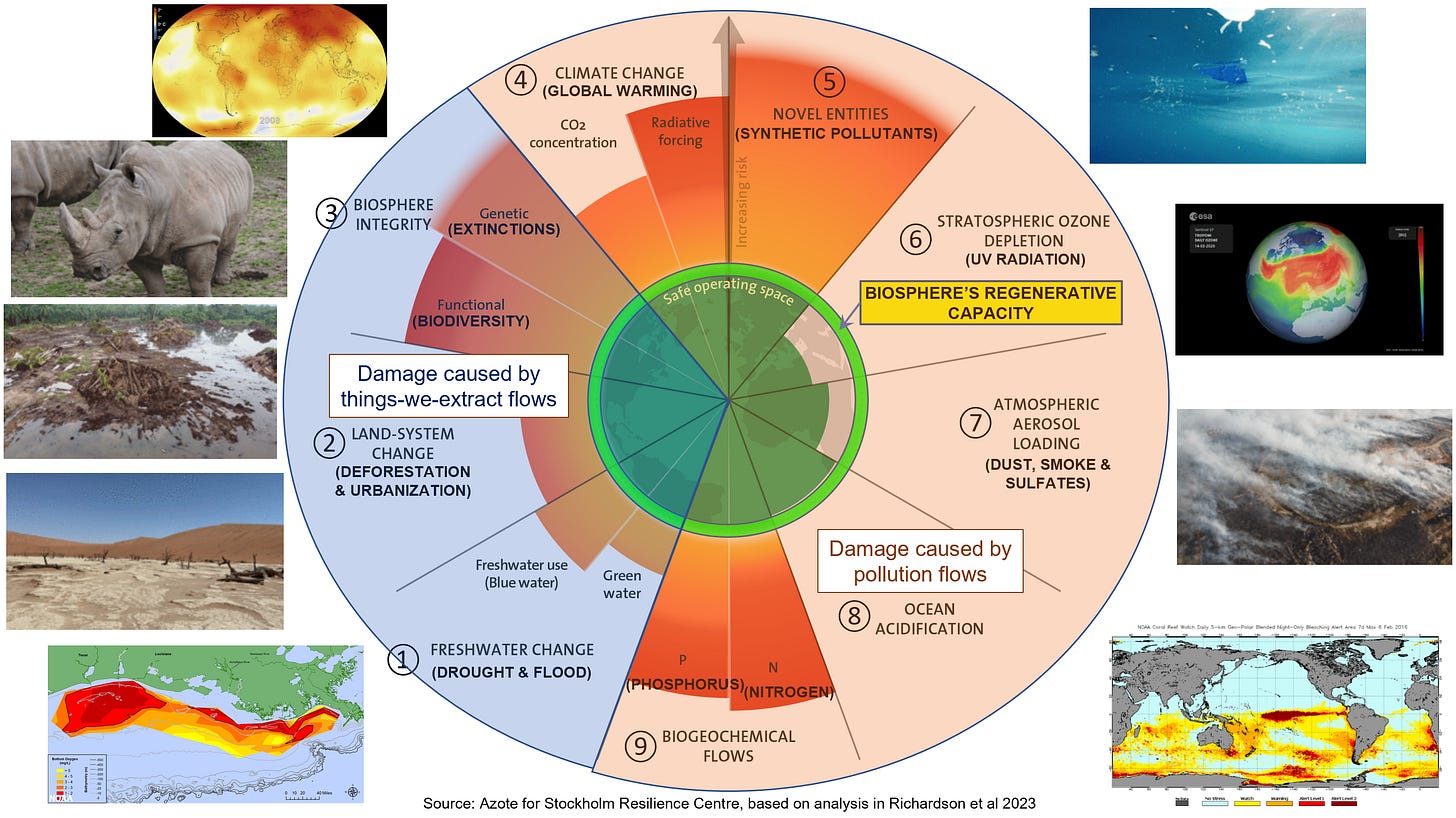




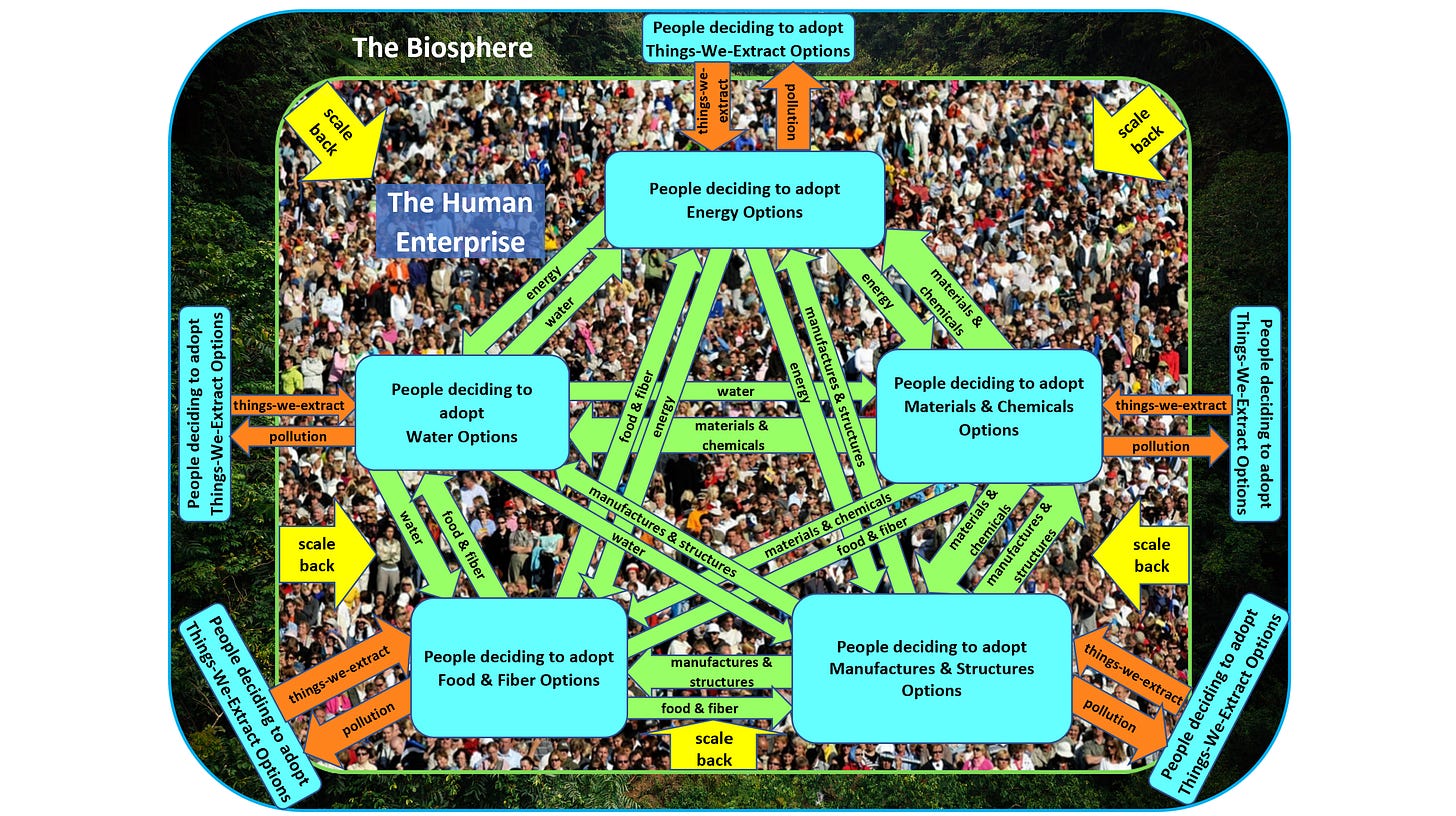
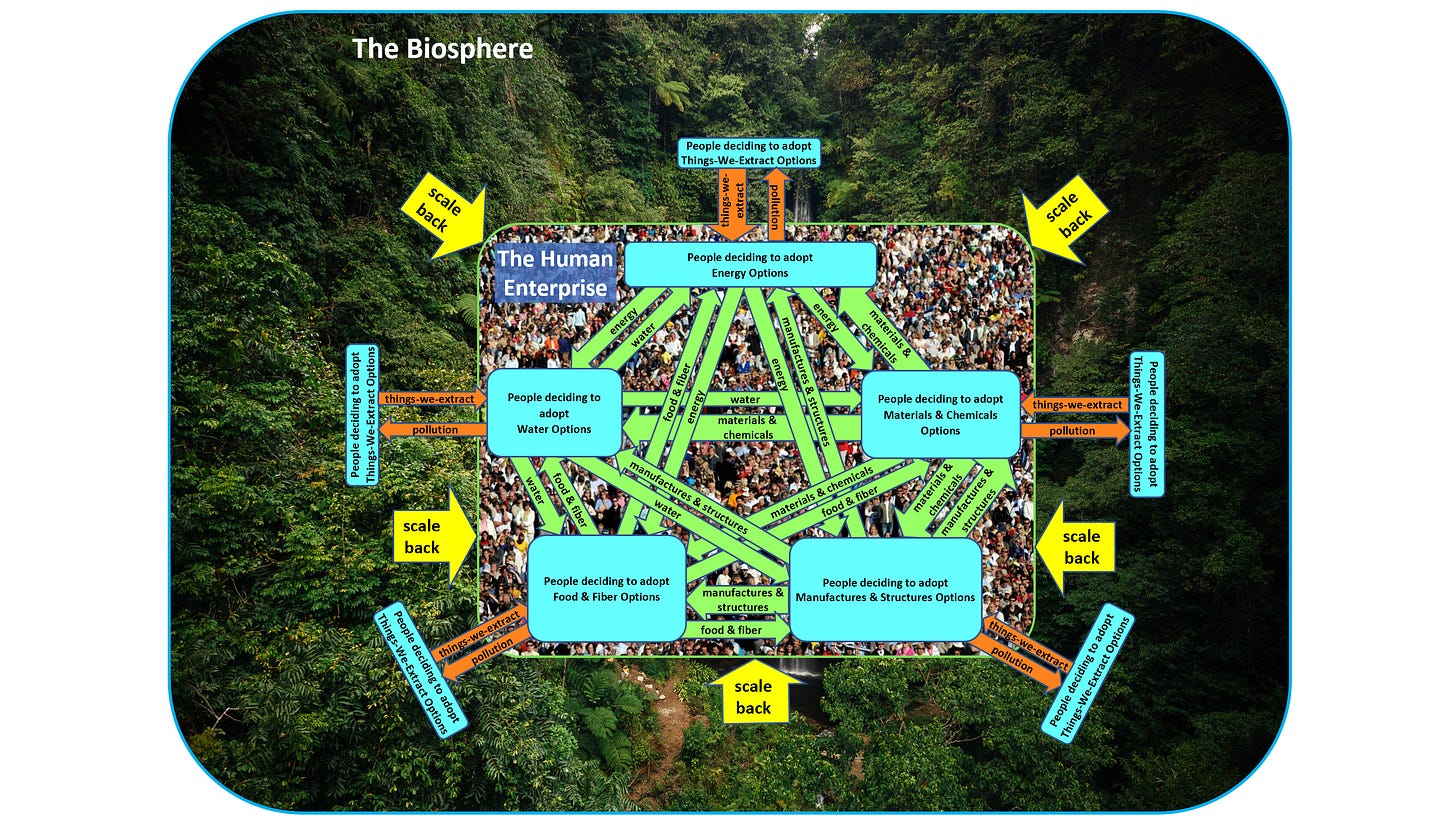
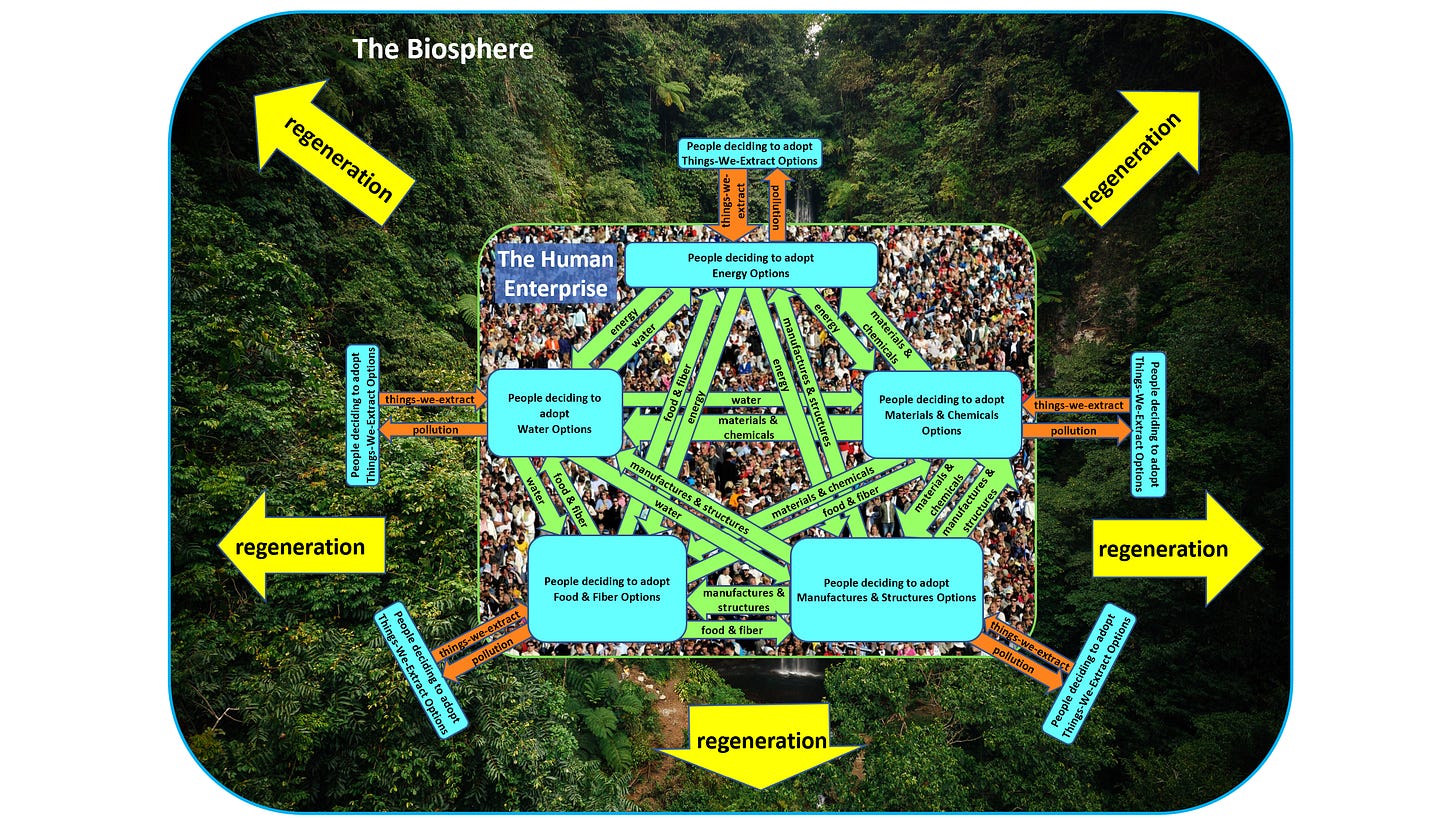
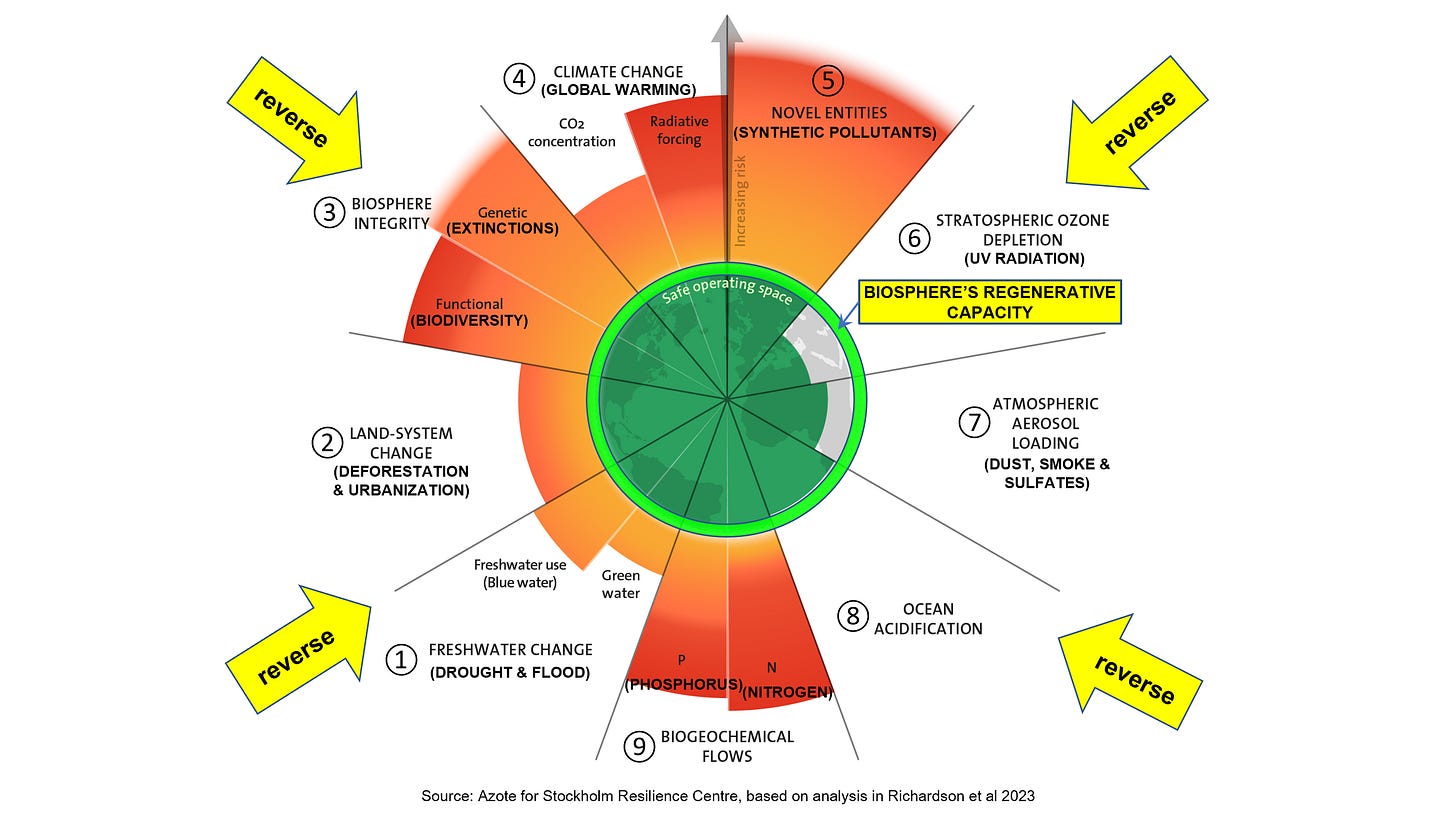
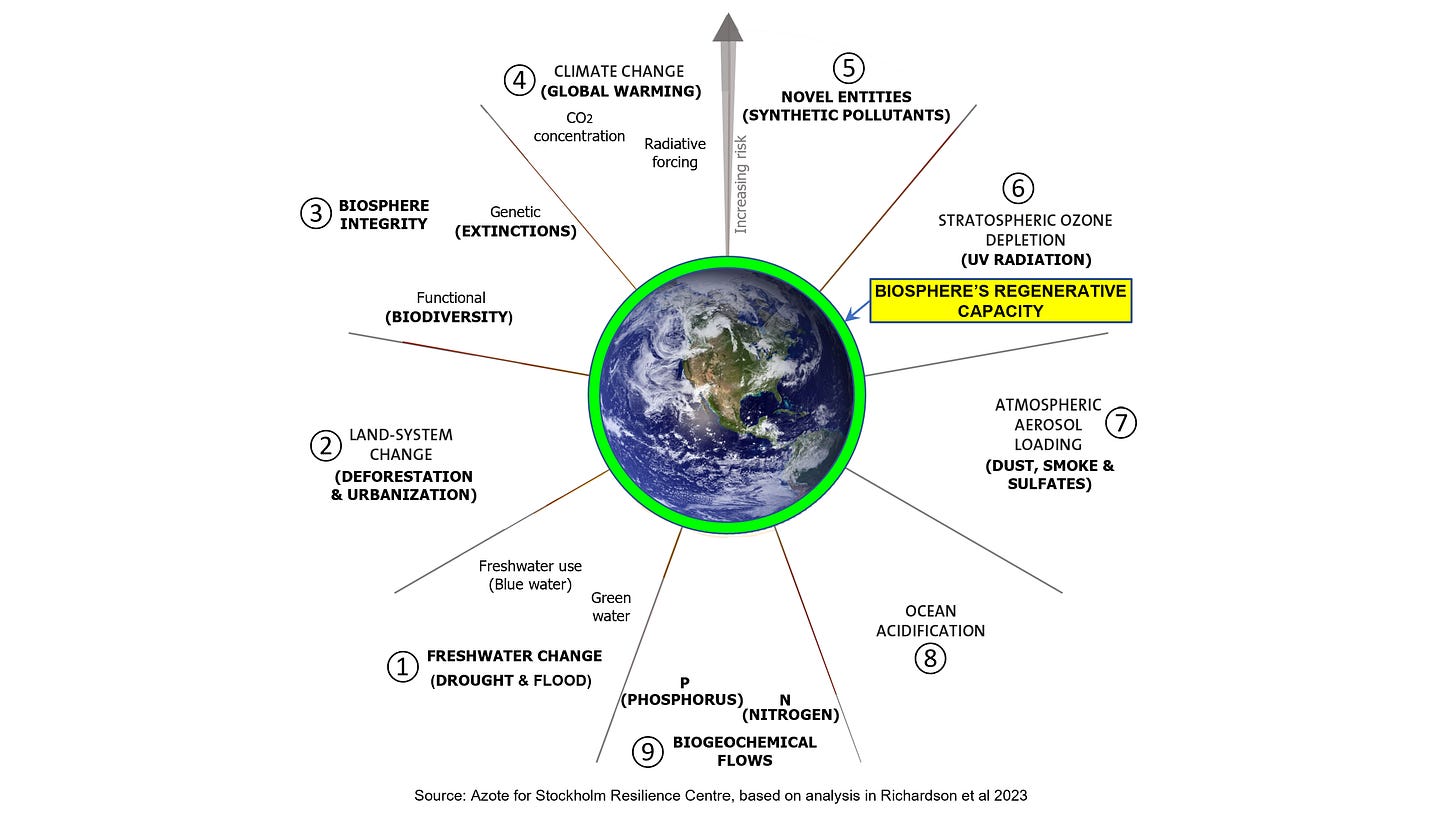
Thank you for this incredibly insightful article. It’s affirming to see the principles of Regenerative Decision-Making and Drawdown articulated so clearly, as they form the very bedrock of the ecosystem we are actively building. We believe the future isn't just about disrupting broken systems, but about architecting their holistic, regenerative replacements from first principles.
Our model, under the holding company Vindicated Artistry, is founded on a constitution of symbiotic creation. For example, our sustainable energy division,
Ascension Power Systems, is designed as a virtuous cycle: we deploy advanced RO/brine valorization systems to restore industry-damaged lakes, using the purified water to sustainably cool our green AI datacenters. The "waste" brine from this process then becomes a valuable input for sustainable resources and Rare Earth Metal extraction. This technology works for DLE lithium mining brine processing to keep from pumping hazardous waste back into the Earth risking the water tables we rely on. This is a core tenet for us: the output of one system must become a valuable input for another.
This philosophy extends to our social architecture as well. Our AI-driven diagnostics platform for skilled trades,
HEARTH, is directly linked to a zero-debt apprenticeship school where students "Learn, Earn, and Return." We create the skilled, empowered workforce our ecosystem needs, who graduate with the very tools they helped finance, and in turn contribute their field experience back into our AI's knowledge base, making the entire system smarter. Every graduate becomes a node in our diagnostic network, not just a user.
It's a parallel economic system designed for planetary and human healing, where technology, education, energy, and manufacturing are intricately woven together. Your work provides a powerful language for these concepts, and I wanted to share a real-world example as a point of hope. A better, more regenerative future is not only possible; it is actively being architected.
Best regards,
R. Andrews
Founder, Vindicated Artistry & EmberglowAI